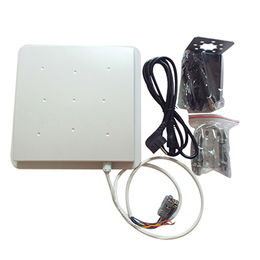RFID reader antennas are not only fundamental for efficient data transmission but also serve as a gateway to a multitude of applications that enhance operational workflows and strategic decision-making. As industries continue to embrace automation and data-driven approaches, the role of RFID antennas becomes increasingly vital.
The versatility of RFID antennas allows them to be utilized in a variety of specialized environments. In agriculture, for instance, RFID antennas help monitor livestock and manage crops by tracking the location and health of animals and plants. Farmers can use RFID tags on animals to gather data about their health and breeding cycles, enabling proactive management. Similarly, RFID technology in crop management allows for the tracking of growth conditions and harvest timings, ultimately improving yield and reducing waste.
In the hospitality industry, RFID antennas enhance guest experiences and operational efficiency. Hotels and resorts utilize RFID technology for keyless entry systems, allowing guests to access their rooms with a simple tap of their RFID-enabled cards or devices. This not only improves convenience but also enhances security by reducing the risk of lost keys. Additionally, RFID systems can be used for inventory management of hotel supplies, ensuring that items such as linens and toiletries are always stocked and available.
The integration of RFID antennas with smart city initiatives is also gaining traction. In urban environments, RFID technology can facilitate better traffic management, waste collection, and public transport systems. For example, RFID tags on public transport vehicles allow for real-time tracking of buses and trains, improving scheduling and reducing wait times for passengers. Waste management systems can use RFID to optimize collection routes, ensuring that waste bins are emptied efficiently and reducing operational costs.
In the field of sports and events, RFID antennas play a crucial role in enhancing security and improving RFID Reader Antennas attendee experiences. At large events, RFID wristbands or badges allow for seamless entry, reducing wait times and streamlining the check-in process. These systems can also provide valuable data about attendee movements and preferences, helping organizers make informed decisions for future events.
As the Internet of Things (IoT) continues to expand, RFID antennas are set to play a pivotal role in creating interconnected systems that offer greater insight and automation. The combination of RFID technology with IoT devices allows for enhanced data collection, enabling organizations to monitor assets and processes in real time. For example, manufacturers can integrate RFID antennas into their production lines, enabling continuous monitoring of equipment status and operational efficiency.
The security of RFID systems remains a pressing concern as technology advances. Organizations are increasingly focusing on developing robust security measures to protect sensitive data transmitted via RFID. Enhanced encryption methods and secure authentication protocols are being implemented to safeguard against potential threats. These measures not only protect the integrity of the data but also build trust with customers and stakeholders.
Looking ahead, the potential for RFID antennas to drive innovation is vast. Advances in materials science may lead to the development of antennas that are lighter, more durable, and capable of operating in a wider range of environmental conditions. Furthermore, research into energy-harvesting technologies could enable RFID systems to function without traditional power sources, creating self-sustaining tags and antennas.
As businesses continue to explore the potential of RFID technology, the focus will likely shift toward developing solutions that are not only efficient but also sustainable. Eco-friendly materials and designs that reduce waste will become increasingly important as organizations strive to meet their sustainability goals. The integration of RFID with renewable energy sources could also pave the way for more environmentally responsible practices.
In conclusion, RFID reader antennas are central to the functionality and effectiveness of RFID systems, driving advancements across a multitude of industries. Their capacity to facilitate real-time data exchange, improve operational efficiency, and enhance customer experiences positions them as essential tools in a rapidly evolving technological landscape. As innovations continue to emerge, the potential applications for RFID antennas will expand, leading to more intelligent, interconnected, and efficient systems that meet the demands of modern society. The journey of RFID technology is far from over, and its future holds exciting possibilities for enhancing productivity and connectivity in an increasingly data-driven world.
